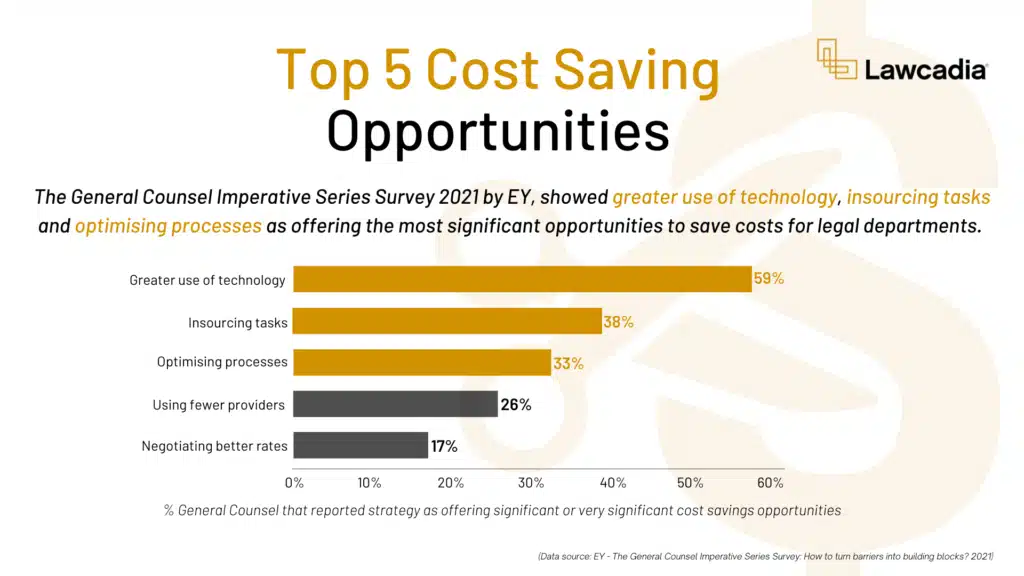Agility, like transformation, is often offered as the solution and key to success in the fast-paced and digitally-driven business environment. But what does it actually mean to be agile? More importantly, what does it mean to be agile in legal practice?
In general, agile is a catch-all phrase that describes alternative project management methods to traditional waterfall or bureaucratic processes. The methods are ‘agile’ in that projects are managed strategically in an adaptable, iterative, and continuous manner, which increases flexibility and improves an organisation or team’s operational capabilities, rather than rigid sequential processes which leave little room for changes once a project has been initiated.
Admittedly, the concept of agile can seem quite vague and perhaps even incompatible with traditional legal practice. However, in this article, we propose 3 practical ways in-house legal teams can adapt agile principles to effectively respond to trends that are shaping the legal landscape, while saving costs.
Our propositions are built upon on results from The General Counsel Imperative Series Survey 2021 by EY, in which General Counsels indicated that three most significant opportunities to save costs in their department are through optimising processes, insourcing tasks and making greater use of technology.

Opportunity 1: Optimising processes
Create a Legal Project Management team
52% of General Counsel’s report that their department’s day-to-day work is aligned with the broader business strategy and is effective at adding value to the business.
Creating a legal project management team can optimise existing processes to ensure that legal matters and projects are managed in a way that is aligned with the broader organisational goals and adds value to the business. By establishing consistent, standardised and accountable workflows, the legal project management team can, for example, implement effective risk management processes, strategically allocate resources, reduce costs or improve client service delivery. According to the Association of Corporate Counsel, successful legal project management involves four key steps:
-
- Setting the scope: define goals, scope and deliverables
- Planning the project: establish timeline, budget, staffing
- Executing the plan: follow pre-determined steps as informed by scope and plan
- Reviewing and revising: evaluate results and adapt scope and plan if necessary
Opportunity 2: In-sourcing tasks
Develop a strategic in-sourcing strategy
78% of General Counsel’s report that in-sourcing (retaining work in-house) offers opportunities to save costs.
Developing a strategic in-sourcing strategy can assist in-house legal teams to reduce operational costs whilst delivering the best outcome possible. In our article Right-Sourcing Legal Matters: A Strategic Approach, we presented ways in which an in-house legal team could develop an in-sourcing strategy to manage workloads, procure a service or complete tasks in a way that optimises the available resources.
In-sourcing refers to the internal delegation and/or completion of tasks, and can thus include:
-
- Assigning tasks to generalists or specialist in-house lawyers
- Allocating tasks to paralegals or legal assistants
- Building in-house competency (upskilling and training)
- Facilitating self-servicing capabilities (contract automation, document retrieval)
- Establishing automated legal intake and triage workflows
- Automating low-value tasks (eDiscovery, contract review)
Importantly, this function can be enhanced by a legal project management team, who, through careful planning, execution and review of internal matter management, can formulate a strategy that optimises the available resources and reduces external budget expenditure.
Opportunity 3: Greater use of technology
Create adaptable workflows by digitising processes
76% of law departments report that they find it challenging to manage current workloads.
Utilising technology to digitise processes can greatly increase an in-house legal team’s ability to manage workloads. In particular, technologies such as workflow automation, cloud computing, data analytics and dashboards offer innovative solutions that can improve processes, minimise risks and enhance client service delivery, whilst reducing the overall (time and financial) cost of legal operations. Moreover, specifically chosen and purpose built digital tools and platforms can facilitate internal and external collaboration which further supports an iterative and agile delivery of services.
Some solutions offered by legal technology innovations include:
-
- Streamlining matter management capabilities
- Collaborative and transparent legal project management
- Electronic billing and spend management
- Self-servicing document generation and retrieval
- Knowledge and content management
- Customisable workflows based on logic and predetermined inputs
- Adaptability, scalability and flexibility to facilitate remote work
- In-house precedent management (the ability to iterate and continuously improve digital workflows and processes)
Integrating technology into legal operations can alleviate the legal team of low value and repetitive tasks, thus allowing them to focus on more complex and strategic work. Combined with project management skills and effective in-sourcing capabilities, the in-house legal function can demonstrate the necessary operational agility to navigate a changing landscape, innovate and adapt to emerging trends without increasing costs.
Conclusion
In summary, although the concept of agility can seem incompatible with traditional legal practice, adapting agile principles for application within a legal environment offers opportunities for in-house legal teams to enhance the legal function by transforming existing processes, optimising internal resources and making greater use of technology, while saving costs.

